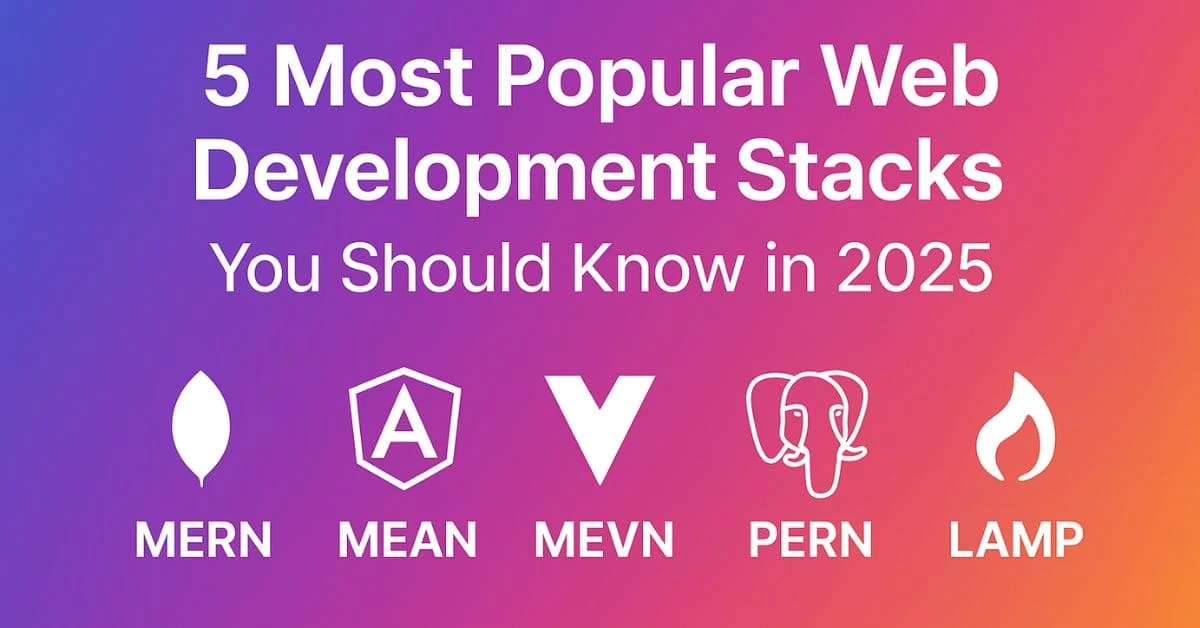If you’re planning to become a full-stack web developer or upgrade your web development skills, understanding popular technology stacks is essential. A web development stack is a combination of technologies used to build and run modern web applications—covering everything from the front end to the back end and databases.
In this article, we’ll explore the 5 most popular web development stacks — MERN, MEAN, MEVN, PERN, and LAMP — along with their components and use cases.
🔹 1. MERN Stack
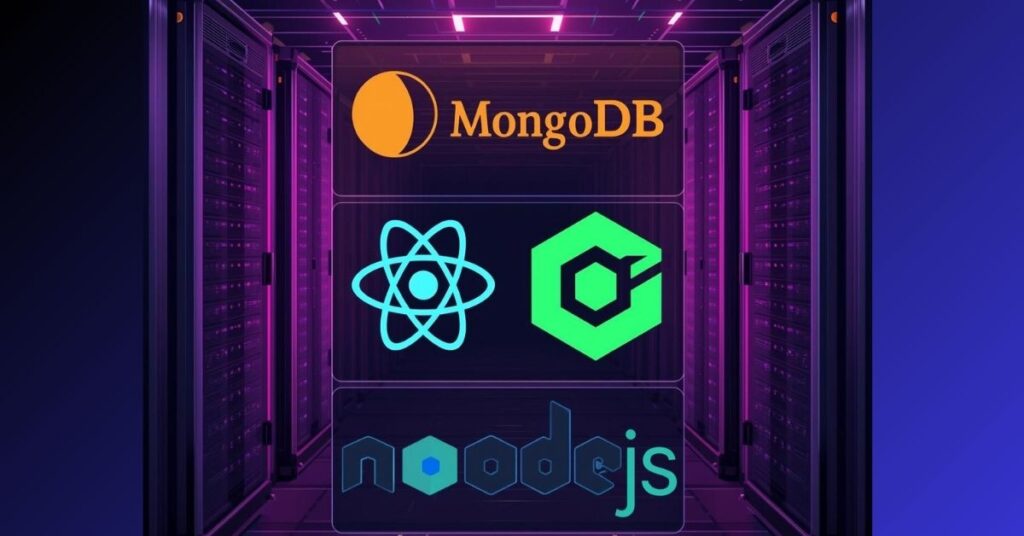
MERN stands for MongoDB, Express.js, React.js, and Node.js.
This stack is one of the most popular choices for modern JavaScript developers because it allows you to build full-stack applications using a single language — JavaScript.
Components:
- MongoDB – NoSQL database that stores data in JSON-like documents.
- Express.js – Lightweight and flexible backend framework for Node.js.
- React.js – Frontend library developed by Facebook for building dynamic user interfaces.
- Node.js – JavaScript runtime for server-side development.
Why MERN?
✅ Ideal for single-page applications (SPAs)
✅ Great performance with a non-blocking architecture
✅ JavaScript across the entire stack
Example Use: Social media apps, dashboards, and SaaS platforms.
🔹 2. MEAN Stack
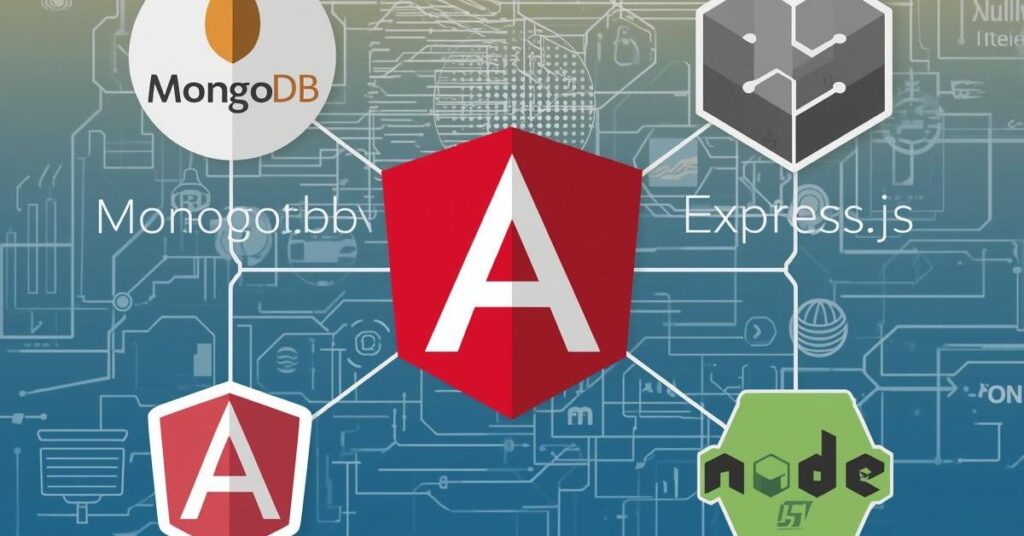
MEAN stands for MongoDB, Express.js, Angular.js, and Node.js.
It’s quite similar to the MERN stack, except it uses Angular.js instead of React. Angular’s strong structure makes MEAN perfect for large-scale, enterprise-level applications.
Components:
- MongoDB – NoSQL document-oriented database.
- Express.js – Backend framework for building APIs.
- Angular.js – Frontend framework by Google for building single-page applications.
- Node.js – Server-side JavaScript runtime.
Why MEAN?
✅ Two-way data binding in Angular
✅ Excellent scalability and performance
✅ Maintained by Google with long-term community support
Example Use: E-commerce sites, business dashboards, and enterprise portals.
🔹 3. MEVN Stack

MEVN stands for MongoDB, Express.js, Vue.js, and Node.js.
This stack replaces React or Angular with Vue.js, known for its simplicity and flexibility. Vue’s learning curve is smaller, making MEVN ideal for beginners and small teams.
Components:
- MongoDB – NoSQL database for storing app data.
- Express.js – Backend framework to handle routes and APIs.
- Vue.js – Progressive JavaScript framework for building user interfaces.
- Node.js – Server environment for JavaScript code execution.
Why MEVN?
✅ Easy to learn and integrate
✅ High performance and flexibility
✅ Lightweight and fast for modern frontends
Example Use: Small business websites, prototypes, and lightweight web apps.
🔹 4. PERN Stack
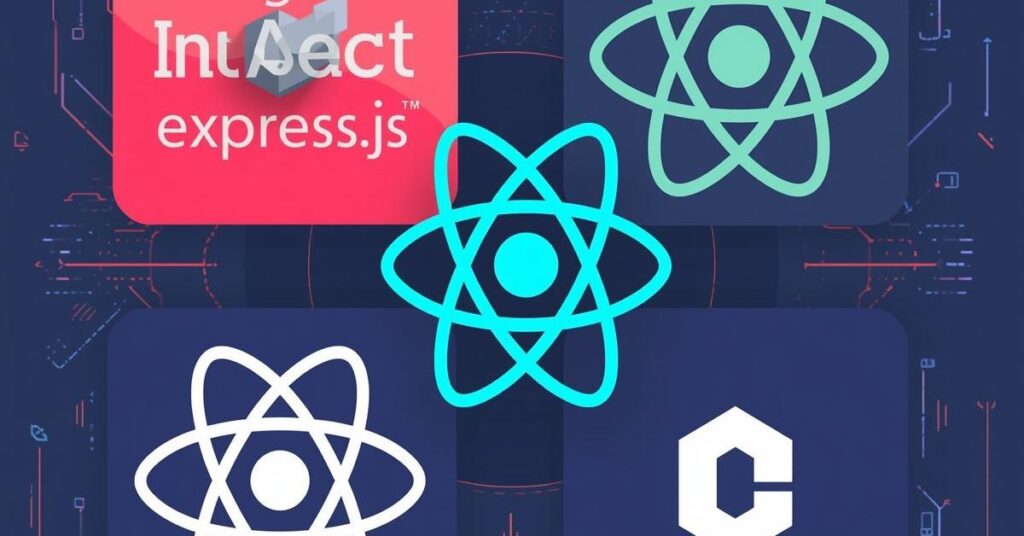
PERN stands for PostgreSQL, Express.js, React.js, and Node.js.
Unlike the previous three, the PERN stack uses PostgreSQL, a powerful relational database system, instead of MongoDB. This makes it perfect for applications requiring complex queries and relational data.
Components:
- PostgreSQL – Open-source relational database.
- Express.js – Backend web framework for Node.js.
- React.js – Frontend library for building interactive UIs.
- Node.js – JavaScript runtime environment for the server.
Why PERN?
✅ Strong relational database support
✅ JavaScript-based front and backend
✅ Great for scalable and data-intensive projects
Example Use: Financial systems, CRMs, and analytical dashboards.
🔹 5. LAMP Stack
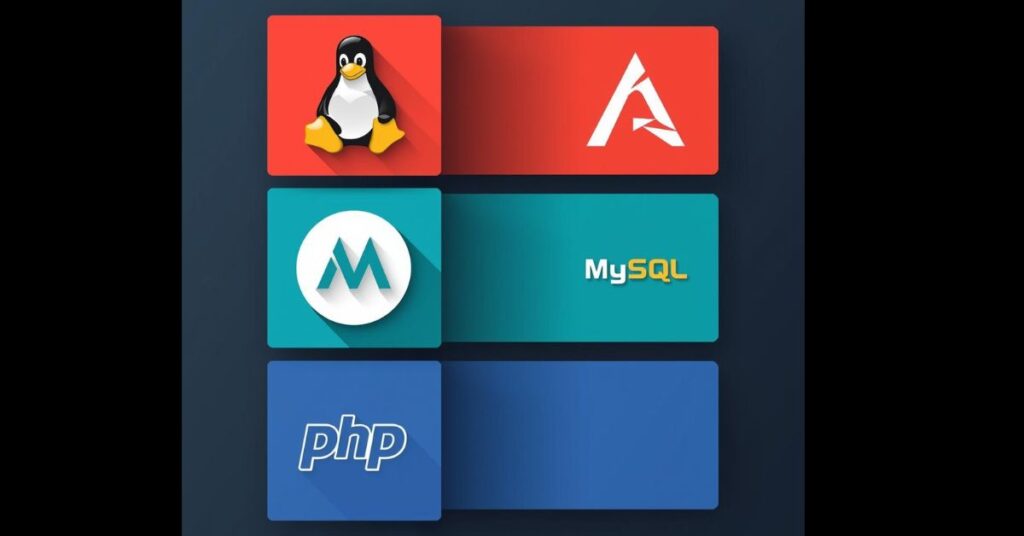
LAMP stands for Linux, Apache, MySQL, and PHP.
It’s a classic web development stack that has powered the internet for decades. Many popular platforms like WordPress, Drupal, and Joomla are built on LAMP.
Components:
- Linux – Operating system that hosts the server.
- Apache – Web server software for serving web pages.
- MySQL – Relational database for data storage.
- PHP – Scripting language for backend logic.
Why LAMP?
✅ Reliable and time-tested stack
✅ Widely supported across hosting providers
✅ Ideal for content management systems (CMS)
Example Use: Blogs, CMS platforms, and small business websites.
💡 Final Thoughts
Each stack has its strengths and ideal use cases:
| Stack | Best For |
|---|---|
| MERN | Dynamic and modern single-page apps |
| MEAN | Enterprise-grade web applications |
| MEVN | Lightweight and flexible projects |
| PERN | Complex data-driven applications |
| LAMP | Traditional CMS and PHP-based sites |
No matter which stack you choose, all five give you the foundation to build scalable, efficient, and modern web applications.
🔗 Related Articles
Originally published on Makemychance.com
Arsalan Malik is a passionate Software Engineer and the Founder of Makemychance.com. A proud CDAC-qualified developer, Arsalan specializes in full-stack web development, with expertise in technologies like Node.js, PHP, WordPress, React, and modern CSS frameworks.
He actively shares his knowledge and insights with the developer community on platforms like Dev.to and engages with professionals worldwide through LinkedIn.
Arsalan believes in building real-world projects that not only solve problems but also educate and empower users. His mission is to make technology simple, accessible, and impactful for everyone.

